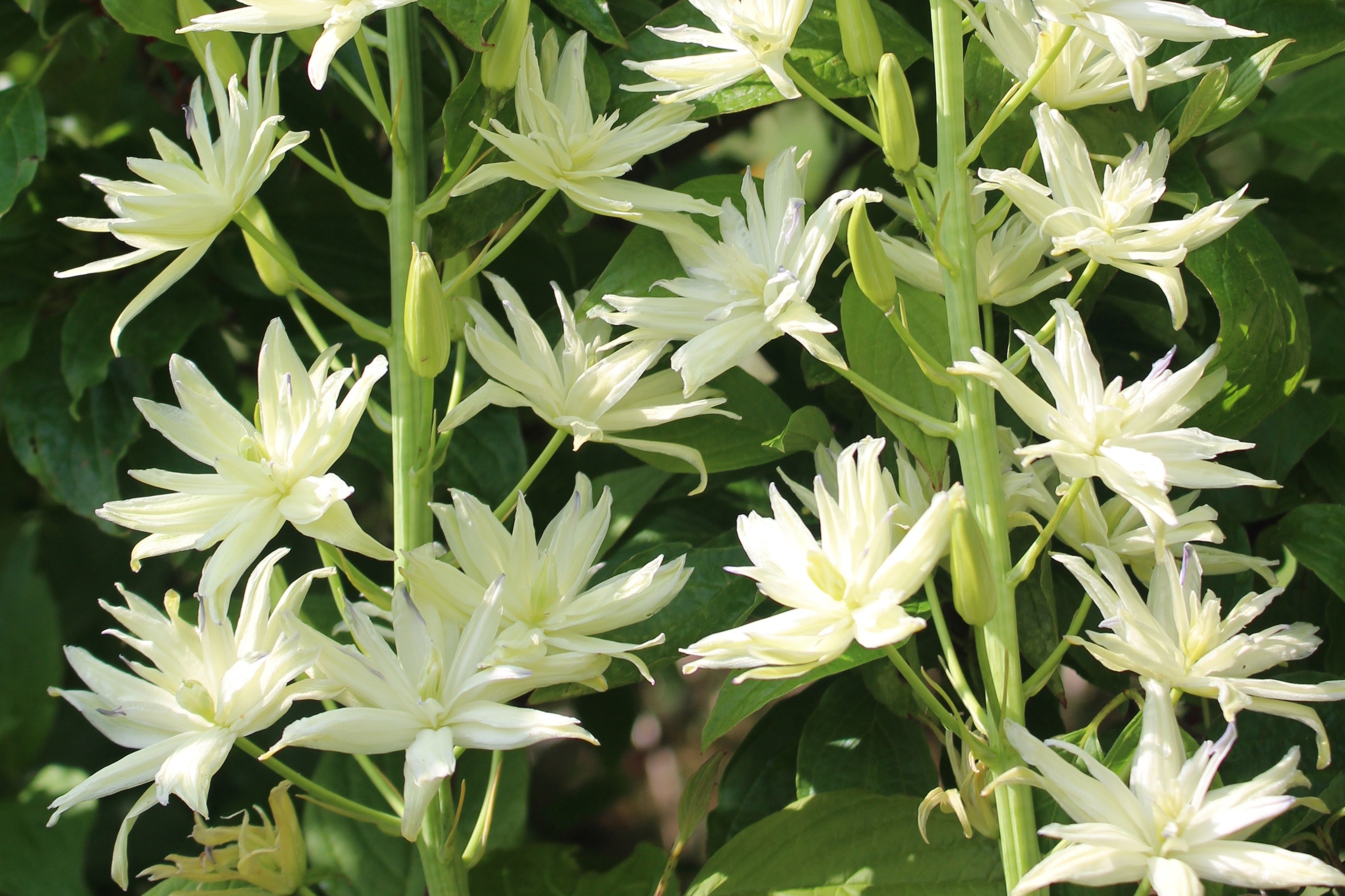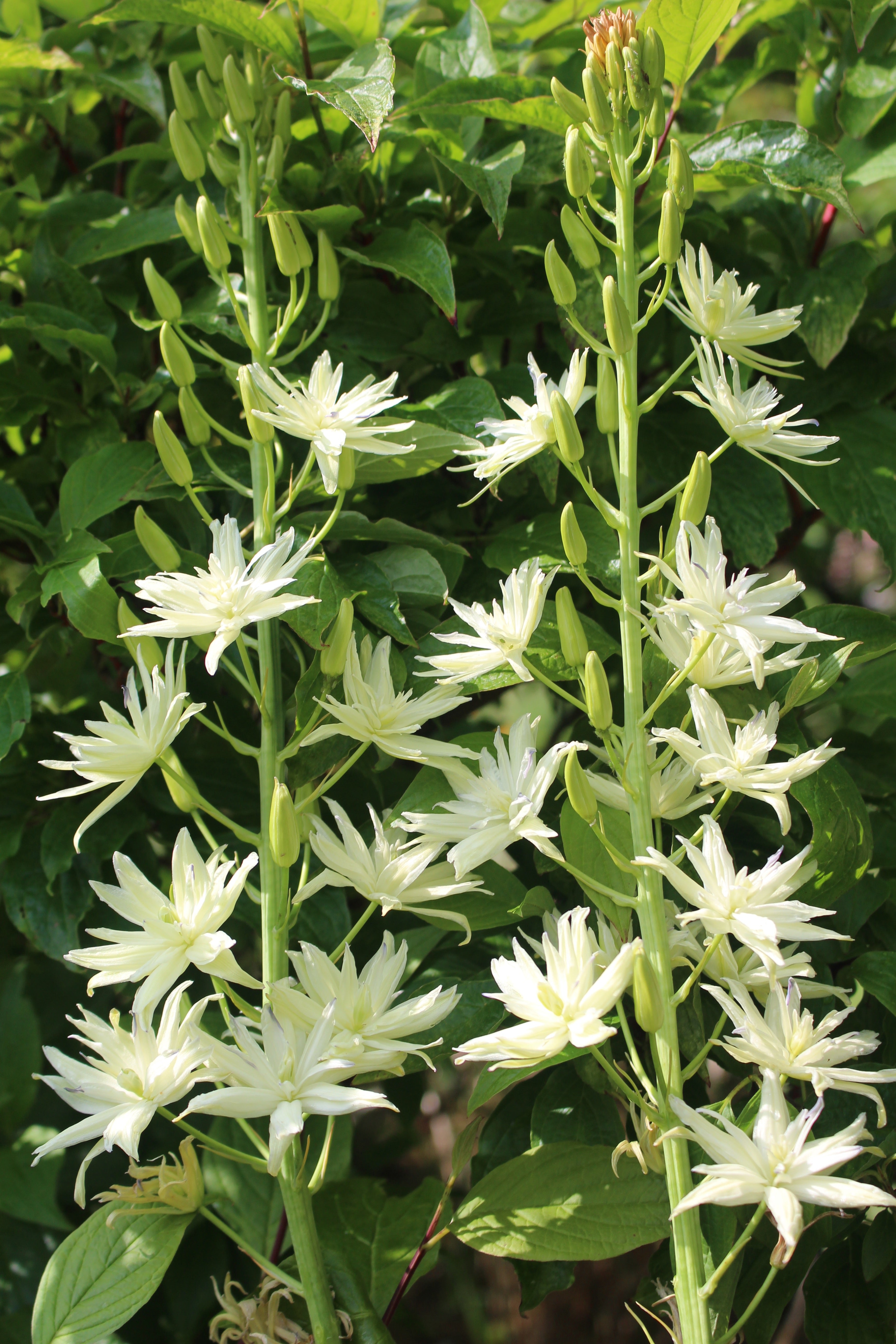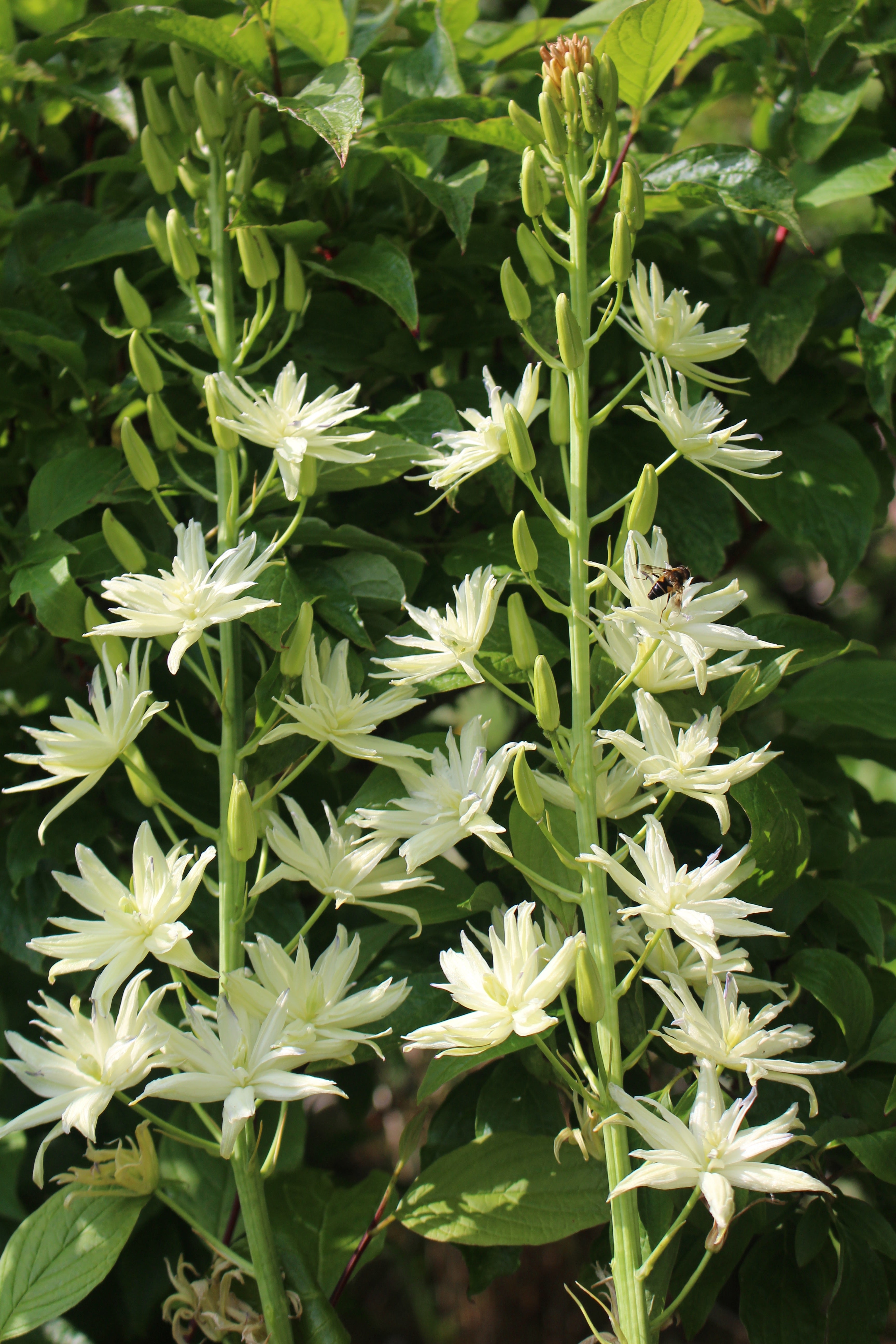Camassia leichtlinii 'Semiplena' (d)
Approx. 0.5 litre pot
About this cultivar:
Camassia leichtlinii 'Semiplena' (d) is a stately late-spring flowering bulb with spires long lasting of semi-double-creamy-white flowers. I wish I could say more but, what else is there to say? This is a fantastic plant. We always sell out when it is in flower - it just looks so good!
- Position: Full sun, partial shade
- Soil: Almost any soil, grows well in Ballyrobert
- Flowers: April, May, June
- Other features: Grows well in Ballyrobert
- Hardiness: H4 - Hardy through most of the UK (-10 to -5°C), Fully hardy - grows well in Ballyrobert!
- Habit: Bushy, Clump forming
- Foliage: Deciduous
- Height: 90 - 120 cm (3 - 4 ft)
- Spread: 30 - 60 cm (1 - 2ft)
- Time to full growth: 2 to 5 years
- Plant type: Herbaceous Perennial, Bulb
- Colour: White, green
-
Goes well with: Narcissus, Allium and other bulbs. Stick it in little corners, or even grass, to give a bit of interest.
About this genus:
Camassia is a genus with many common names such as camas, quamash, Indian hyacinth, camash, and wild hyacinth. The six-petaled flowers vary in colour from pale lilac or white to deep purple or blue-violet. In the wild Camas can appear to colour entire meadows when in flower, indeed, in 1806 Meriwether Lewis wrote about Camassia: "at a short distance, the colour resembles lakes of bright clear water." They are bulbous perennial plants with basal linear leaves which emerge early in the spring. They can grow to a height of 1 to 4 feet with their exquisite multi-flowered stem rising above the main plant in summer.
Camassia species were an important food staple for Native Americans and settlers in parts of the American Old West. In fact many areas in the Northwest USA are named after the plant!
While Camassia species are edible and nutritious the ones we grow are for ornamental use. Camassia will grow in lightly shaded areas, on stoney outcrops, and in open situations in a variety of soils. They tend to thrive in wetter areas and can even be used alongside streams and rivers - unusual for bulbous plants. We love Camassia because it thrives in the heavy clay of our garden at Ballyrobert - even the difficult 'dry clay' areas (As they go dormant in summer, they want little or no water - in other words they are drought tolerant). They love full sun, but seem to also do fine in part shade. One of the toughest and longest flowering bulbous plants you can own.
Like most bulbous plants, Camassia naturalizes well in gardens. Try it with Narcissus, Allium and other bulbs. Stick it in little corners, or even grass, to give a bit of interest.






